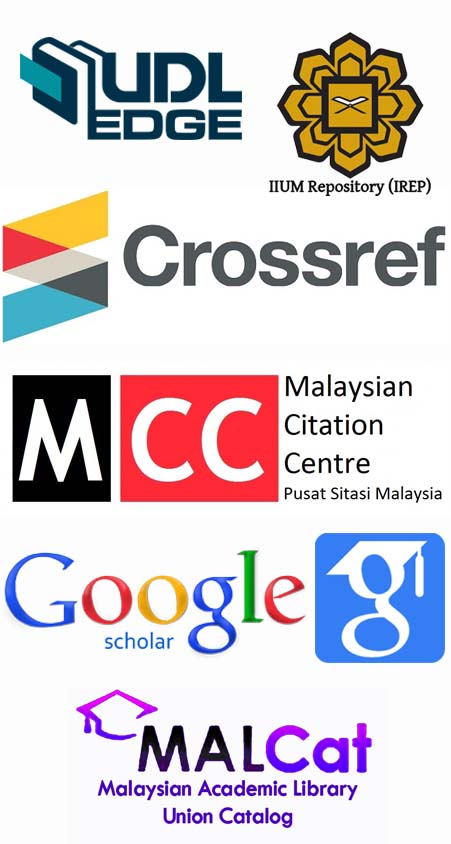Issues in Scientific Approach to Ḥadīth Commentary: A Critical Study of Selected Ḥadīths on Prophetic Medicine
DOI:
https://doi.org/10.31436/alburhn.v5iSpecial%20Issue%201.227Keywords:
Mushkil al-ḥadīth, ḥadīth commentary, al-sharḥ al-ʿilmī, scientific commentary, religion and scienceAbstract
This research studies the concept of scientific commentary (al-sharḥ al-ʿilmī), which recently gained considerable significance, especially in dealing with ḥadīths of al-Ṭibb al-Nabawī (Prophetic medicine) and understanding them. In the beginning, the study defines the concept of scientific commentary, shedding light on its history in terms of its emergence, context, scholars and their arguments. Later, the study identifies and discusses the following theoretical and practical issues of scientific commentary in selected ḥadīths of Prophetic medicine. The historical, descriptive, and analytical methods are utilised in the entire study. The finding of this study indicates that there have been numerous commentaries that adopt the scientific approach in dealing with the subject of Prophetic medicine. This has posed significant methodological issues that led to the non-traditional understanding of Prophetic ḥadīths. The issue requires further investigation to shed better light on this problem.
Downloads
References
Abū Dāwūd, Sulaymān ibn al-Ashʿath al-Azdī al-Sajistānī. Sunan Abī Dāwūd. Edited by Shuʿaib al-Arnaʾūt. Dār al-Risālah al-ʿĀlamiyyah, 2009.
al-Bukhāri, Muḥammad ibn Ismāʿīl. Ṣaḥīḥ al-Bukhārī. Beirut: Dār Ṭawq al-Najāt, 2001.
al-Dihlawī, Syāh Waliyullah. Ḥujjat Allah al-Bālighah. Beirut: Dār al-Jīl, 2005.
al-Khatīb, Muʿtaz. “al-Ṭibb al-Nabawī: Ruʿā Naqdiyyah.” Islam Online, April 2021. https://islamonline.net/archive/الطب-النبوي-رؤى-نقدية-2/.
al-Qaraḍāwī, Yūsuf. al-Sunnah Maṣdaran Li al-Maʿrifah Wa al-Ḥaḍārah. Cairo: Dār al-Sharq, 2002.
al-Rūmī, Fahd. Ittijāhāt Fī al-Tafsīr Fi al-Qarn al-Rābiʿ ʿAshar. Beirut: Muʾassash al-Risālah, 1986.
al-Sarakhsī, Muḥammad ibn Aḥmad Abū Bakr. Uṣūl al-Sarakhsī. Hyderabad: Lujnah Iḥyāʾ al-Maʿārif al-ʿUthmāniyyah, 1993.
al-Shanqīti, Abdullah Bin Ibrahīm al-ʿĀlawi. Nasyr al-Bunūd ʿala Marāqi al-Suʿūd. al-Maghrib: Maṭbaʿah Faḍālah, n.d.
al-Tirmidhī, Muḥammad ibn ʿĪsā Abū ʿĪsā. al-Jāmiʿ al-Kabīr. Edited by Bashar Awwad Maʿruf. Beirut: Dar al-Gharb al-Islami, 1998.
Bakar, Osman. Tawhid and Science. Kuala Lumpur: Secretariat for Islamic Philosophy and Science, 1991.
Benli, Ali Ramazan, and Sunay Didem. “Changing Efficacy of Wet Cupping Therapy in Migraine with Lunar Phase: A Self-Controlled Interventional Study” 23 (2017): 6162–67. https://doi.org/10.12659/MSM.905199.
Demirel, Serdar. “An Analytical Study of The Prophet’s Hadith: You Are More Knowledgeable of The Matters of Your World.” Maalim al-Quran Wa al-Sunnah 3, no. 3–4 (2008): 213–36.
Demirel, Serdar, and Saad Eldin Mansour. “A Theoretical Framework for al-Ṭibb al-Nabawī (Prophetic Medicine) in Modern Times.” Revelation and Science 01, no. 02 (2011): 35.
Gooley, Joshua J., Kyle Chamberlain, Kurt A. Smith, Sat Bir S. Khalsa, Shantha M.W. Rajaratnam, Eliza Van Reen, Jamie M. Zeitzer, Charles A. Czeisler, and Steven W. Lockley. “Exposure to Room Light before Bedtime Suppresses Melatonin Onset and Shortens Melatonin Duration in Humans.” Journal of Clinical Endocrinology and Metabolism 96, no. 3 (March 2011): E463. https://doi.org/10.1210/jc.2010-2098.
Hemida, M. G., A. Elmoslemany, F. al-Hizab, A. Alnaeem, F. Almathen, B. Faye, D. K.W. Chu, R. A.P.M. Perera, and M. Peiris. “Dromedary Camels and the Transmission of Middle East Respiratory Syndrome Coronavirus (MERS-CoV).” Transboundary and Emerging Diseases. Blackwell Publishing Ltd, April 2017. https://doi.org/10.1111/tbed.12401.
Ibn Ḥanbal, Aḥmad ibn Muḥammad Abū Abd Allāh. al-Musnad. Edited by Shuʿayb al-Arnāʾūṭ. Beirut: Muʾassasah al-Risālah, 2001.
Ibn Qayyim al-Jawziyyah, Muḥammad ibn Abū Bakr Shams al-Dīn. al-Ṭibb al-Nabawī. Edited by ʿAbd al-Ghāni ʿAbd al-Khāliq. Beirut: Dār al-Fikr, n.d.
Latifah, Wachidah Nur, Siti Nur Ngaeni, Rian Adi, Setia Rahman, Inarotu Millati Azka, Mohammad Ali, and Maqshudi Zaen. “Camel Urine for Health in Islam and Science Perspective.” Kaunia: Integration and Interconnection Islam and Science 14, no. 1 (April 2018): 15–19. https://doi.org/10.14421/KAUNIA.1326.
Mat Abdullah, Nurul Aiman, and Mohd Izhar Ariff Mohd Hashim. “Rawatan Menggunakan Air Kencing Unta Menurut Perspektif Islam Dan Sains ( Health Treatment of Camel Urine Based on Islamic and Science Perspective ).” Fikiran Masyarakat. Vol. 6, December 2018.
World Health Organization. “Middle East Respiratory Syndrome Coronavirus (MERS-CoV),” 2019. https://www.who.int/news-room/fact-sheets/detail/middle-east-respiratory-syndrome-coronavirus-(mers-cov).
Muslim, Ibn al-Ḥajjāj al-Naysābūrī. Saḥīḥ Muslim. Edited by Muḥammad Fuʾād ʿAbd al-Bāqi. Cairo: Dār Iḥyāʾ al-Kutub al-ʿArabiyyah, n.d.
Saleha, Nurmukaromatis, Eka Dianty Feni, and Anggriani Utama Tuti. “Bekam Basah Pada Paruh Ke Dua Bulan Hijeriah Lebih Efektif Menurunkan Tekanan Darah.” Jurnal Ilmiah Keperawatan 2, no. 2 (2018).
ʿAbd al-Dāʿim, al-Kaḥīl. “Muḍādāt Saraṭān Fī Bawl al-ʾIbil.” Asrār al-Iʿjāz al-ʿIlmī, 2012. http://www.kaheel7.com/ar/index.php/2012-12-04-18-32-28/2082-2018-09-16-22-34-53.
ʿAbd al-Dāʿim, al-Kaḥīl. “ʿAshr Haqāʾiq ʿIlmiyyah Min al-Sunnah al-Nabawiyyah.” Mawsūʿat al-Kaḥīl li al-Iʿjāz fī al-Qurʾān wa al-Sunnah, n.d. https://kaheel7.net/?p=10901.
Downloads
Published
How to Cite
Issue
Section
License
In general, reusing or reproducing substantial portions of al-Burhān content requires permission. This includes the use of text, figures, tables, multimedia content, and any other material published in any issues of al-Burhān Journal of Qur'an and Sunnah Studies. For some instances, al-Burhān may make its content freely viewable; however, such material may require permission for reuse. To seek permission, please contact the editorial.









